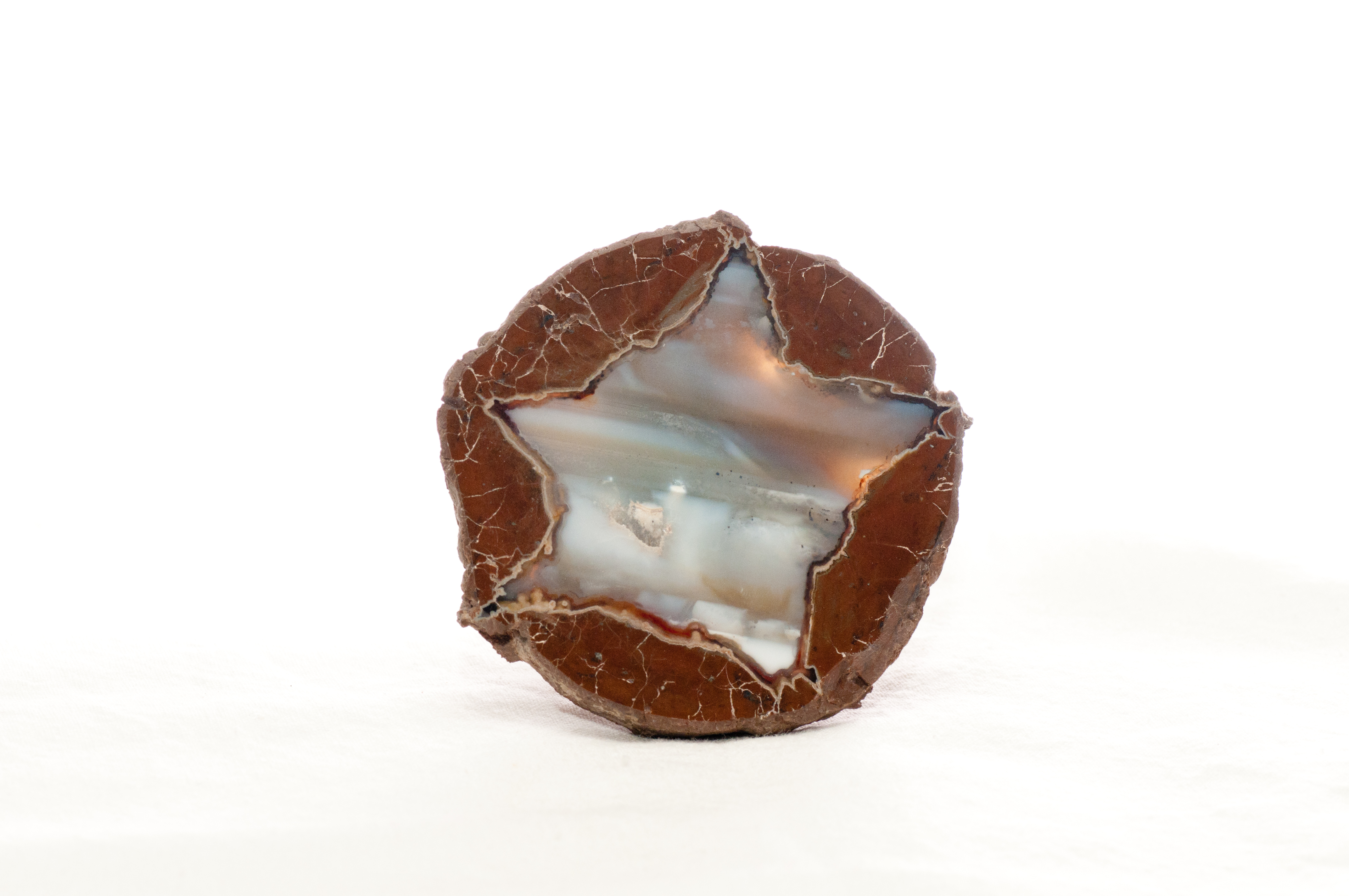Welcome to the wonderful world of thunder eggs. They might look plain from the outside, but can be cut and polished to reveal a whole range of colors and crystals within, and are popular with the rock collecting community.
Thunder eggs, also known as lithophysae, are spherical objects formed in silica-rich volcanic rock, often a rock called rhyolite.
The name “thunder egg” is said to originate from Native American folklore that says these rounded rocks were the eggs of the mythical thunderbirds that created thunder and lightning during storms, hence the name. Other legends suggest that thunder eggs were thrown during thunderstorms by warring “thunder spirits” who lived on Mount Jefferson and Mount Hood.
All thunder eggs start life as volcanic lava. As this lava cools, material is trapped around gas bubbles. Over time, these gas bubbles crack and allow the gas to escape, leaving behind a hollow cavity. Silica and other minerals including feldspar from volcanic ash can be deposited in this cavity, hardening to deposit near solid cores of chalcedony or agate or quartz crystals which form the core of a thunder egg. The minerals often grow outwards from the center of the cavity, forming radiating structures called spherulites.

The hollow cavity is filled with crystal structures or layers.
Image Credit: Wirestock Creators/Shutterstock
Some thunder eggs can be identified based on their crystal composition and the naturally occurring minerals in the area. For instance, the Del Norte Area in Colorado is known for thunder eggs containing plume and moss agate.
There is some confusion surrounding the difference between geodes and thunder eggs. While some suggest geodes are any rock with a void inside and thunder eggs are solid, some suggest that thunder eggs are different because they were formed only by lava flow while geodes can be formed in many different ways.
Thunder eggs can be found all over the world. The most common place to find thunder eggs in the USA is Oregon, where thunder eggs have been the state rock since 1965.
All “explainer” articles are confirmed by fact checkers to be correct at time of publishing. Text, images, and links may be edited, removed, or added to at a later date to keep information current.
Source Link: Crack Open A Thunder Egg For A Beautiful Surprise (That You Can't Eat)